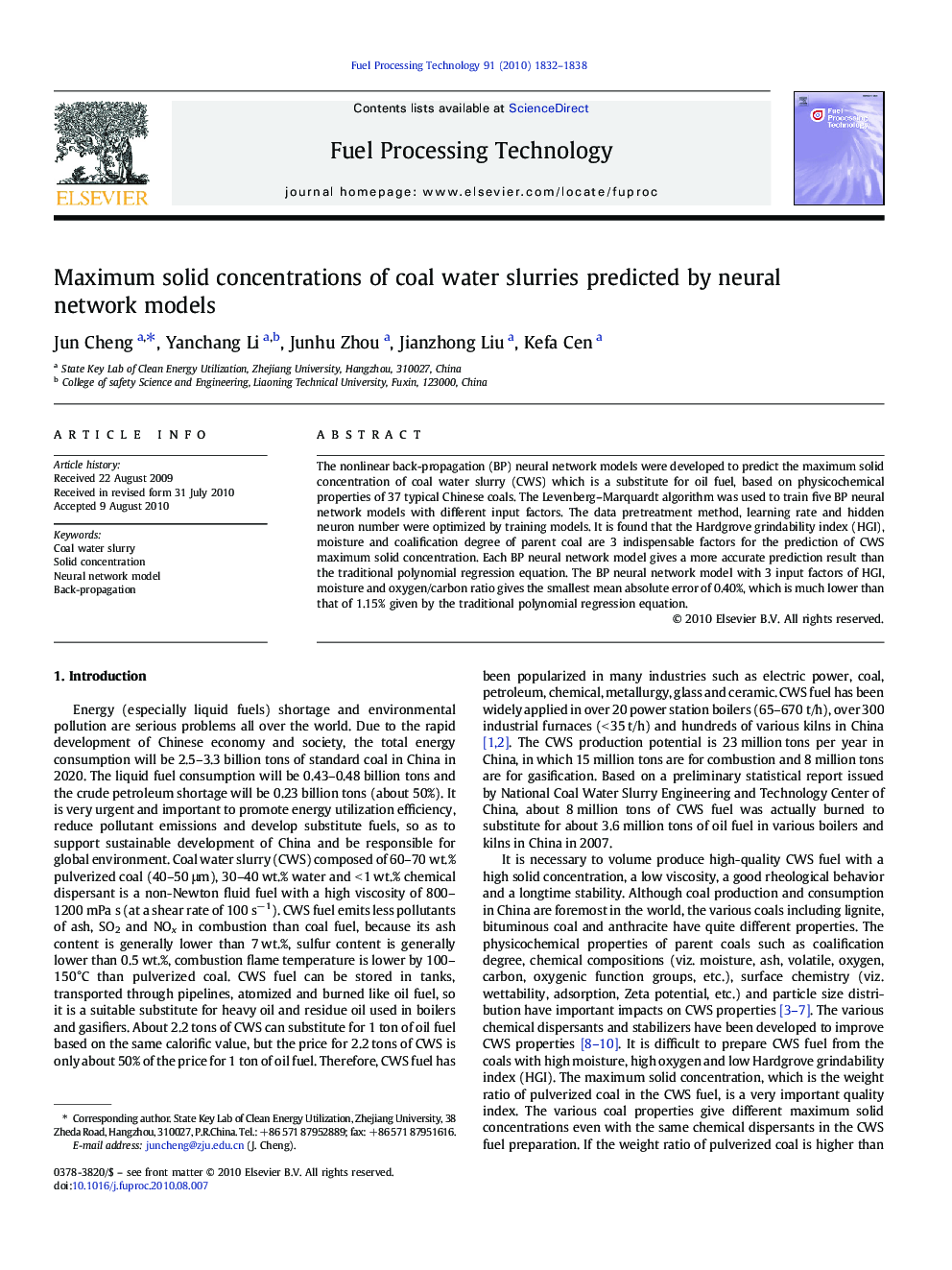| Article ID | Journal | Published Year | Pages | File Type |
|---|---|---|---|---|
| 210609 | Fuel Processing Technology | 2010 | 7 Pages |
The nonlinear back-propagation (BP) neural network models were developed to predict the maximum solid concentration of coal water slurry (CWS) which is a substitute for oil fuel, based on physicochemical properties of 37 typical Chinese coals. The Levenberg–Marquardt algorithm was used to train five BP neural network models with different input factors. The data pretreatment method, learning rate and hidden neuron number were optimized by training models. It is found that the Hardgrove grindability index (HGI), moisture and coalification degree of parent coal are 3 indispensable factors for the prediction of CWS maximum solid concentration. Each BP neural network model gives a more accurate prediction result than the traditional polynomial regression equation. The BP neural network model with 3 input factors of HGI, moisture and oxygen/carbon ratio gives the smallest mean absolute error of 0.40%, which is much lower than that of 1.15% given by the traditional polynomial regression equation.
